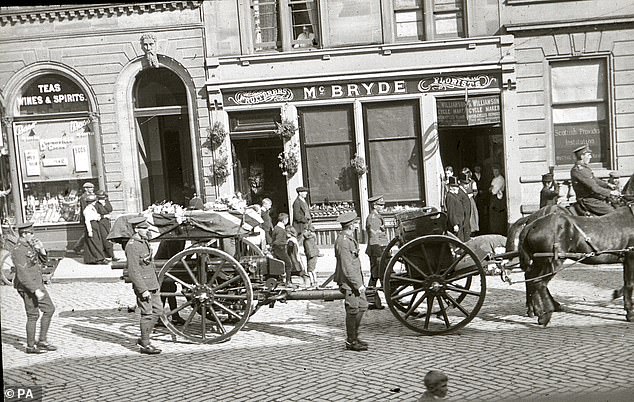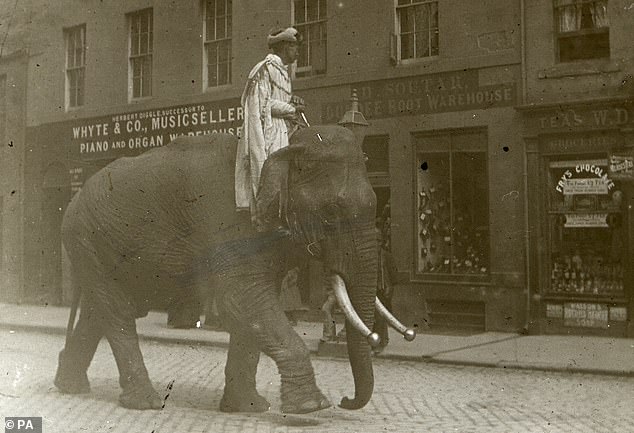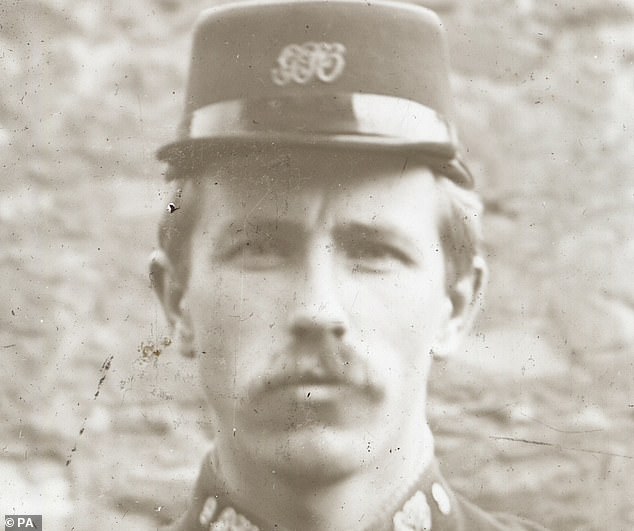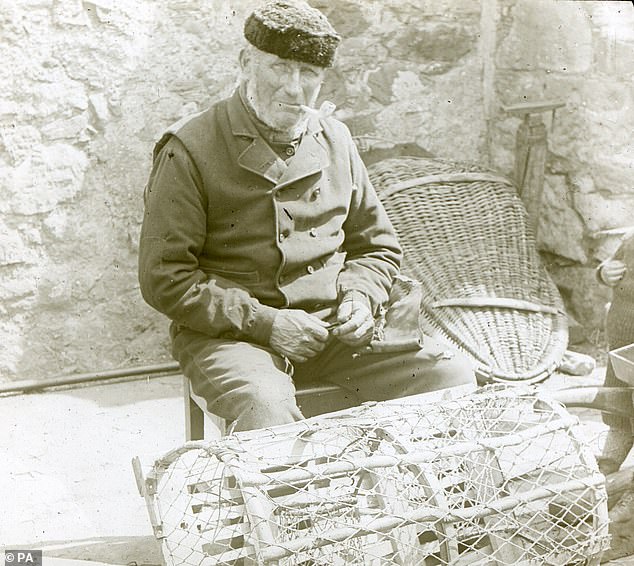Bitter blizzards, Scotland’s first military funeral and a circus elephant: Stunning pictures capture the work of a postman as he made his 18-mile rounds on foot every day for 46 years from the 1890s to Second World War
Photographs of a postman who documented life in rural Scotland between the 19th century and the Second World War will go on display this week.
Images from the 1890s to the 1940s captured snowstorms, the first military funeral of the First World War in Cupar, Fife, and even a circus elephant.
George Normand, born in Cupar, started taking photographs in the 1890s when he traveled 30 kilometers on foot in the area every day.
The postman was 18 years old and made four rounds a day, starting at 6 a.m. and ending at 9 p.m.
He photographed farm workers, Crail fishermen and traders, as well as erratic weather, including a huge snowdrift.
One photo shows a circus elephant and rider on Cupar’s Crossgate.
Photographs of a postman who documented life in rural Scotland between the 19th century and the Second World War will go on display this week. Above: A photo taken by George Normand of people walking unsteadily along a winding pond

Images from the 1890s to the 1940s captured snowstorms, the first military funeral (above) of the First World War in Cupar, Fife, and even a circus elephant
During his rounds, Normand fought through snowstorms in 1916, and waded through waist-deep, floodwaters to reach the post office in Pitscottie in 1917.
The water was within half an inch of the countertop, but despite the risks, Normand captured these moments on film.
The photographs, taken over a period of fifty years, will be exhibited at the Duncan Institute in Cupar, which has recently been renovated and is managed by OnFife.
Andrea McMillan, OnFife’s local tutor, said: ‘George Normand’s photographs give us a rare glimpse into the lives of ordinary people over the age of 50 as they go about their daily lives.
‘When we look into the eyes of his subjects, we feel a deep connection with those who lived here more than 100 years ago.’
Normand joined the Army in 1917 and served overseas in the Army Veterinary Corps for two years.
Returning to Fife he was promoted to the post of supervisory postman in Cupar and remained in this position until his retirement in 1935.
Normand then used a pony-and-trap to complete his rounds, before using a bicycle, and worked as a postman for 46 years.
He died at the age of 102 on Christmas Day 1976.

One photo, showing a circus elephant and rider on Cupar’s Crossgate, captures a comic moment

George Normand (above), born in Cupar, started taking photographs in the 1890s when he walked 30 kilometers a day in the area
The absence of traffic in the rural idyll now seems striking, and castles, churches and shopping streets alike show how the area developed.
Important events such as the announcement at Cupar Cross of the Relief of Mafeking on 17 May 1900, and Cupar’s first military funeral of the 1914-1918 war, were captured on film.
Portraits of workers and local dignitaries are on display, as well as informal moments of rural life, such as skaters and curlers on frozen ponds, Sunday school children at summer picnics and farm workers seeking employment at Cupar’s biennial workforce fair.
Normand shared his images with locals and used his Magic Lantern – purchased for £22.15 in 1898 – to project his slides onto a linen screen.

Some photographs have an artistic quality, such as a Crail fisherman repairing fishing baskets while wearing a black hat and smoking a pipe, reminiscent of Vincent van Gogh’s self-portrait

Snow drifts at Peat Inn, 1916. Normand died on Christmas Day in 1976
The slides have now been preserved as over 200 digital images, making them accessible to anyone with an interest in history and photography.
Some photographs have an artistic quality, such as a Crail fisherman repairing fishing baskets while wearing a black hat and smoking a pipe, reminiscent of Vincent van Gogh’s self-portrait.
Another photo, Piece Time at Larennie Farm, which captures crops and farm girls in white hats, was compared to a Van Gogh landscape.
Along with provosts and ministers, two local dignitaries were photographed: Jimmy Dickie and ‘General’ Gordon – appearing again and again, sometimes with a drink in hand.
The images will be shown by OnFife, which runs the Duncan Institute, and will be on display at a local studies open day on January 18.
